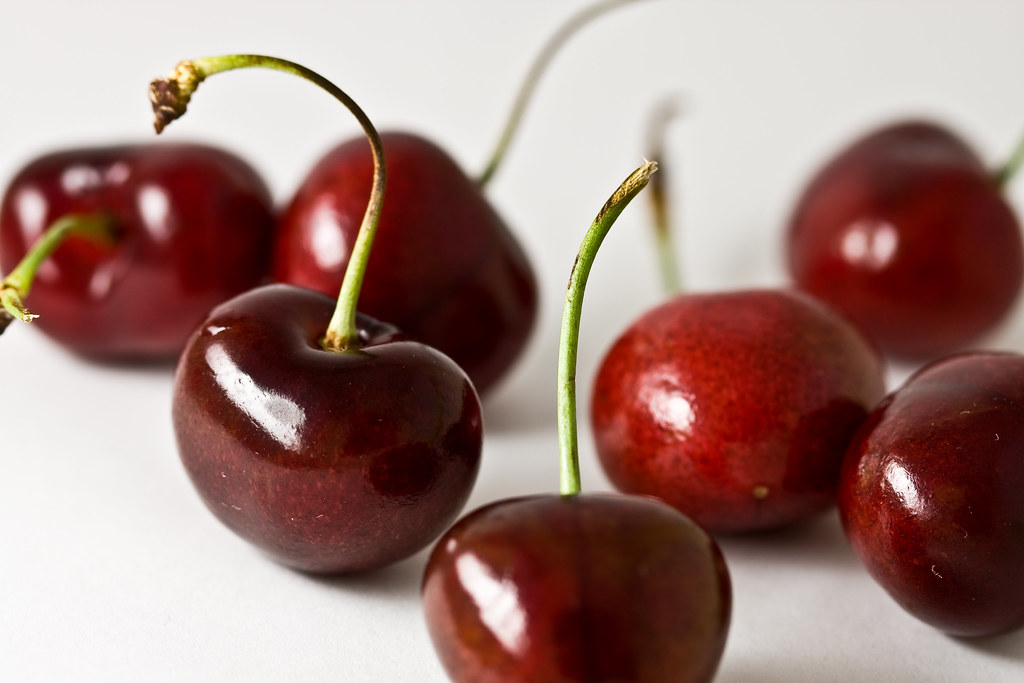Together with catechins and proanthocyanidins, anthocyanins and their oxidation products are the most abundant flavonoids in the human diet.
Examples of anthocyanin rich foods are:
- certain varieties of grains, such as some types of pigmented rice (e.g. black rice) and maize (purple corn);
- in certain varieties of root and leafy vegetables such as aubergine, red cabbage, red onions and radishes, beans;
- but especially in red fruits.

Anthocyanins are also present in red wine; as the wine ages, they are transformed into various complex molecules.
Anthocyanin content in vegetables and fruits is generally proportional to their color: it increases during maturation, and it reaches values up to 4 g/kg fresh weight (FW) in cranberries and black currants.
These polyphenols are found primarily in the skin, except for some red fruits, such as cherries and red berries, e.g. strawberries, in which they are present both in the skin and flesh.
Glycosides of cyanidin are the most common anthocyanins in foods.
Contents
Anthocyanin rich fruits
- Berries are the main source of anthocyanins, with values ranging between 67 and 950 mg/100 g FW.
- Other fruits, such as red grapes, cherries and plums, have content ranging between 2 and 150 mg/100 g FW.
- Finally, in fruits such as nectarines, peaches, and some types of apples and pears, anthocyanins are poorly present, with a content of less than 10 mg/100 g FW.
Cranberries, besides their very high content of anthocyanins, are one of the rare food that contain glycosides of the six most commonly anthocyanidins present in foods: pelargonidin, delphinidin, cyanidin, petunidin, peonidin, and malvidin. The main anthocyanins are the 3-O-arabinosides and 3-O-galactosides of peonidin and cyanidin. A total of 13 anthocyanins have been detected, mainly 3-O-monoglycosides.
Anthocyanin absorption
Until recently, it was believed that anthocyanins, together with proanthocyanidins and gallic acid ester derivatives of catechins, were the least well-absorbed polyphenols, with a time of appearance in the plasma consistent with the absorption in the stomach and small intestine. Indeed, some studies have shown that their bioavailability has been underestimated since, probably, all of their metabolites have not been yet identified.
In this regard, it should be underlined that only a small part of the food anthocyanins is absorbed in their glycated forms or as hydrolysis products in which the sugar moiety has been removed.
Therefore, a large amount of these ingested polyphenols enters the colon, where they can also suffer methylation, sulphatation, glucuronidation and oxidation reactions.
Anthocyanins and colonic microbiota
Few studies have examined the metabolism of anthocyanins by the gut microbiota in the colon, which is part of the larger human microbiota.
Within two hours, it seems that all the anthocyanins lose their sugar moieties, thus producing anthocyanidins.
Anthocyanidins are chemically unstable in the neutral pH of the colon. They can be metabolized by colonic microbiota or chemically degraded producing a set of new molecules that have not yet fully identified, but which include phenolic acids such as gallic acid, syringic acid, protocatechuic acid, vanillic acid and phloroglucinol or 1,3,5-trihydroxybenzene. These molecules, thanks to their higher microbial and chemical stability, might be the main responsible for the antioxidant activities and the other physiological effects that have been observed in vivo and attributed to anthocyanins.
References
- de la Rosa L.A., Alvarez-Parrilla E., Gonzàlez-Aguilar G.A. Fruit and vegetable phytochemicals: chemistry, nutritional value, and stability. 1th Edition. Wiley J. & Sons, Inc., Publication, 2010
- de Pascual-Teresa S., Moreno D.A. and García-Viguera C. Flavanols and anthocyanins in cardiovascular health: a review of current evidence. Int J Mol Sci 2010;11:1679-1703. doi:10.3390/ijms11041679
- Escribano-Bailòn M.T., Santos-Buelga C., Rivas-Gonzalo J.C. Anthocyanins in cereals. J Chromatogr A 2004:1054;129-141. doi:10.1016/j.chroma.2004.08.152
- Han X., Shen T. and Lou H. Dietary polyphenols and their biological significance. Int J Mol Sci 2007;9:950-988. doi:10.3390/i8090950
- Manach C., Scalbert A., Morand C., Rémésy C., and Jime´nez L. Polyphenols: food sources and bioavailability. Am J Clin Nutr 2004;79(5):727-747. doi:10.1093/ajcn/79.5.727
- Tsao R. Chemistry and biochemistry of dietary polyphenols. Nutrients 2010;2:1231-1246. doi:10.3390/nu2121231